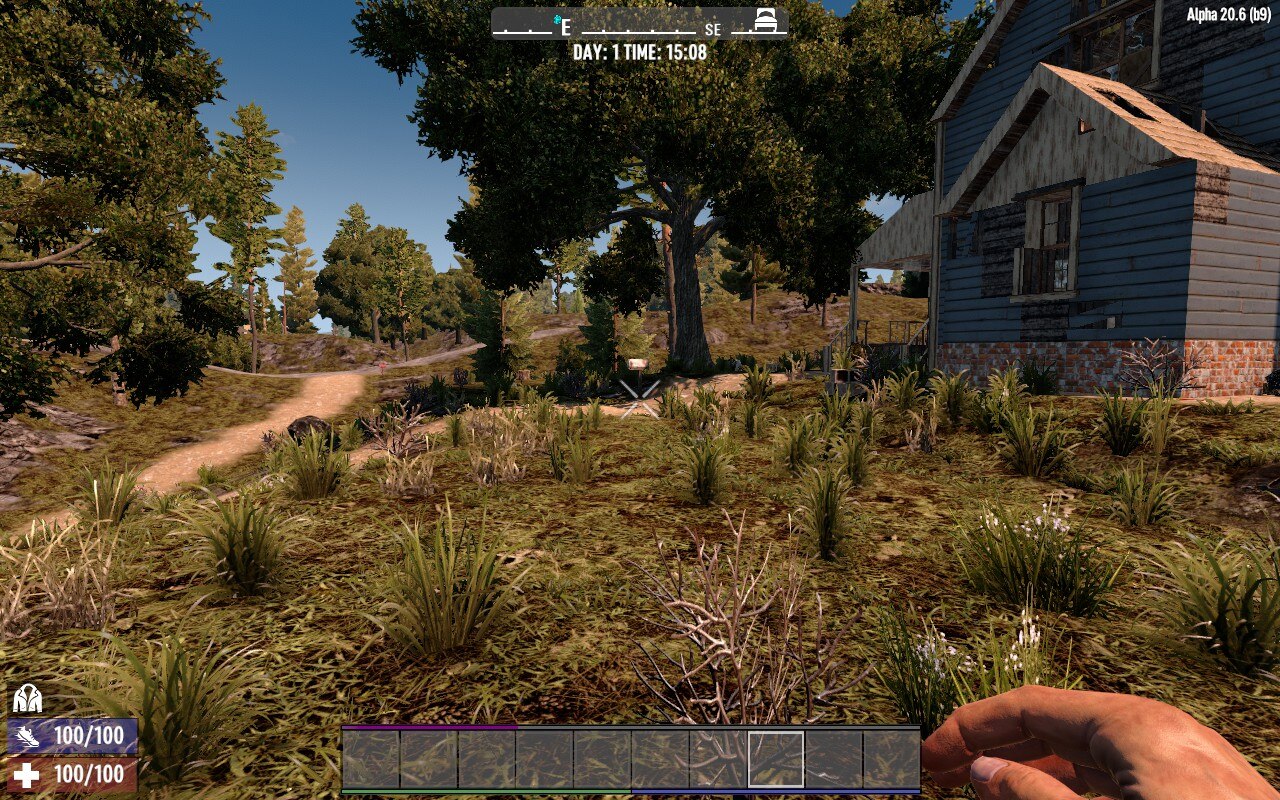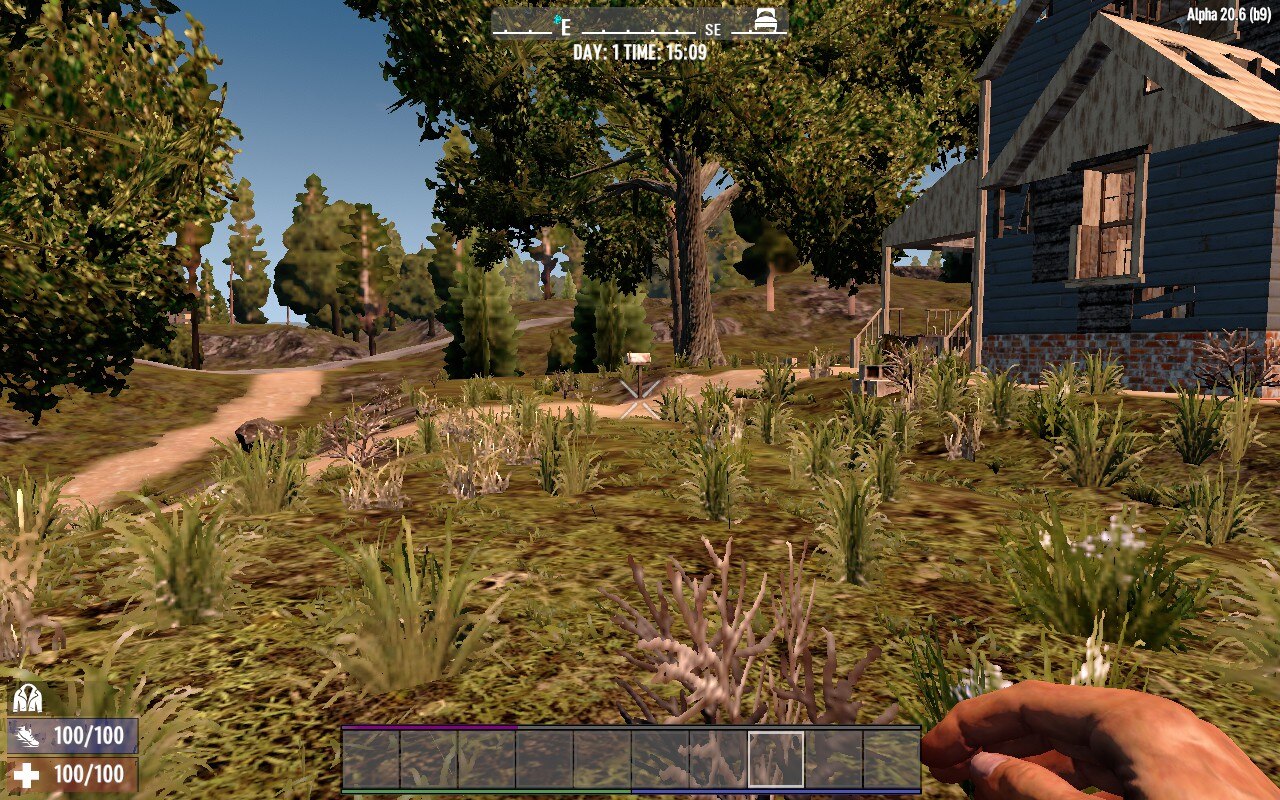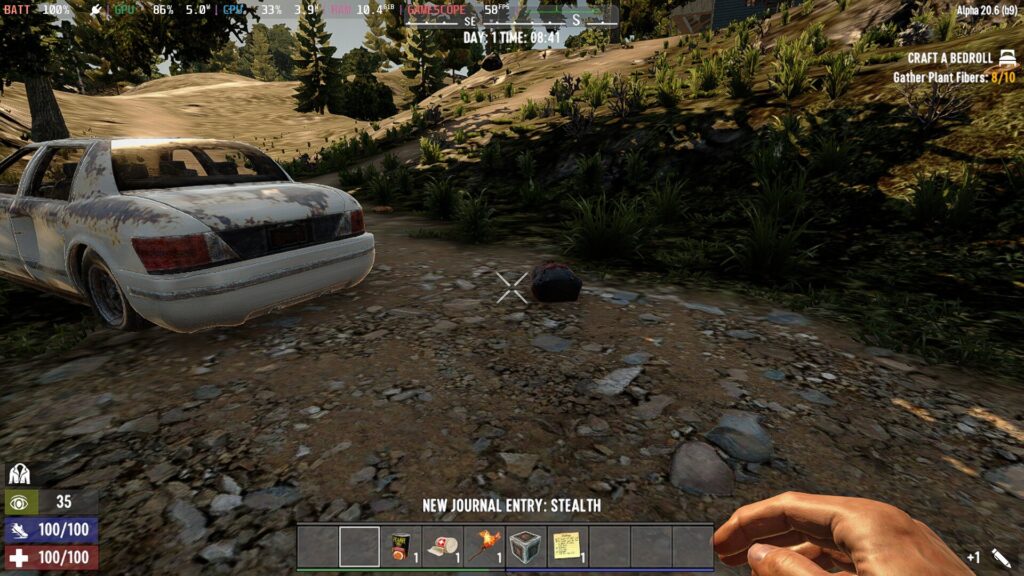Performance Overview


7 Days to Die performs similarly on Steam Deck as it does to its Windows counterpart, for better or worse.
As 7 Days to Die is still an Early Access game, despite releasing back in 2013, don’t expect AAA quality. Textures are decent and in-game item models look the part. Character models aren’t up to today’s standards, but that’s more of a problem with the game being nearly a decade old.
Performance overall is a mixed bag. When the game works, it works without too many problems. But just like a shambling corpse, issues can arise from out of nowhere.
The game will crash, and your first decision is whether to stick with the default way of playing or switch over to Vulkan in the game’s launcher. Vulkan will fix stuttering issues, but it’s prone to even more crashes.
Then there’s the issue where I couldn’t get a controller working with the default settings. Changing the Proton version to Proton GE or Experimental fixed this, but that then means you’re not using a Valve-regulated or stable version of Proton.
It is possible to play on the current version of Proton with a keyboard and mouse controller template downloaded from the online community, but that means you won’t have corresponding in-game buttons. If you’re new to 7 Days to Die, you absolutely do not want to play like that.
As I say, once the game is running it runs near enough as well on the Steam Deck as it does on Windows. You can expect an average of 55 frames with everything set to low, or you can use the settings below to get around 45 to 50 frames and have everything still look really good.
Recommend Settings

The settings below are designed to hit framerates of 45 to 50, with enough of a buffer for when things get a little chaotic.
If you find yourself wanting more frames, it is possible to change the default preset to very low, but I wouldn’t recommend it. 7 Days to Die is still playable like that, but you lose a ton of visual fidelity. Just check out the slider image at the top of the page to see what I mean.
That’s why I’ve gone with the settings I have. 45 to 50 frames still feel like 60, and the extra visual power really helps to make the game shine.
| 7 Days to Die (In-game Settings) | |
| Resolution | 1280×800 (16:10) |
| Fullscreen | On |
| Dynamic Resolution Mode | Off |
| VSync | On |
| Brightness | 50% |
| Field of View | 65 |
| Quality Preset | Custom |
| Anti-Aliasing | High |
| Texture Quality | Half |
| Texture Filter | High |
| UMA Texture Quality | High |
| Reflection Quality | Low |
| Reflected Shadows | Off |
| Shadows Distance | Low |
| Water Quality | Low |
| Particles | 50% |
| View Distance | Medium |
| LOD Distance | 50% |
| Terrain Quality | Medium |
| Grass Distance | Low |
| Object Quality | High |
| Occlusion | On |
| Bloom | On |
| Depth of Field | Off |
| Motion Blur | Off |
| SSAO | On |
| SS Reflections | Off |
| Sun Shafts | On |
| Steam Deck Settings (Quick Access Menu) | |
| TDP: 11 (45) | Estimated Battery Life: 1 Hour 40 Minutes |
| Docked Mode Resolution: 1280×700 | FSR: ON (Docked Mode) |
| GPU Usage: 90% | Temperature: 71 degrees |
| Extra Info | |
| Fills the Entire Steam Deck Screen | Yes |
| Valve Grading | Playable |
| Performance Rating: 2/5 | |
Bugs and Issues
Expect crashes. Lots of them. They will also lock up your Steam Deck as well, so be sure to hold down the power button for 10 seconds to make sure the Steam Deck fully shuts down when this happens.
As mentioned above, you’ll also want to switch the Proton version to either Proton GE if you have it or Experimental. You can do that on the home screen by using the three lines button (start) on 7 Days to Die, then heading to Properties, then changing the compatibility to Proton Experimental.
Verdict

Playing any game with the constant threat of a crash hanging over your head isn’t fun. While 7 Days to Die works well, it’s not anywhere near as stable as other survival games like The Forest.
That said, if you can accept the shortcomings, it’s still a blast to play on Steam Deck once everything is up and running. Sure, it may look a little dated, but given the Steam Deck’s limitations, it’s the type of game that’s perfect for the handheld.
So long as you’re aware of what you’re getting, and that some tinkering is involved, 7 Days to Die is well worth checking out.
Disclosure: Review code purchased online. | All screenshots captured on Steam Deck.| To learn more about our review policy click here. | Alternatively, click here to find out why you can trust me.

